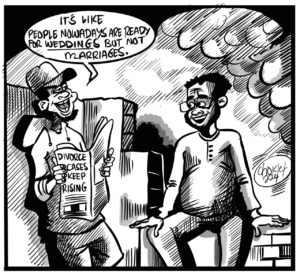Transport and Communications Minister Brian Mushimba says the dry spells and heavier than normal rainfalls being experienced in some parts of the country is a fulfillment of a prediction made by the Meteorological department last year.
Delivering a Ministerial statement on the tropical cyclone Idai, which has left hundreds dead and property destroyed in Mozambique, Zimbabwe and Malawi, Mushimba said Zambia needed to enhance it’s level of preparedness to cushion the impact of weather and climate induced disasters.
Meanwhile, Mushimba said his ministry was not surprised by the dry spells being experienced in the Southern part of the country as well as the heavier than normal rainfall in the Northern.
“Mr Speaker, allow me to report back to this House that the seven-day whether forecast that we issued on the 13th of March was very accurate and that we’ve recorded above average rainfall in areas that we cited were going to be affected by the tropical cyclone. We have also recorded below average to no rainfall at all over the southern half of the country during the same period. Let me now recap on the 2018/19 rainfall pattern that I shared with this House in October 2018, where I indicated that the Southern half of the country was going to receive below average rainfall while the Northern was likely to receive surplus rainfall. We also indicated in that forecast that the rainy season was going to start late, in November over most parts of the country and that the Southern half was going to be characterised by dry spells and early end to the rainy season,” Mushimba said.
“Mr Speaker, what was outlined in the 2018/19 rainy season forecast is what we are observing in areas over the Northern half of the country where heavier than normal rainfall has been recorded in some places, exceeding 50% of what they normally receive in a season. In contrast, areas over the Southern and Western Provinces including areas on the Copperbelt such as Mpongwe and Kafulafuta have recorded rainfall deficits and in some areas in excess of 50% less rainfall than their season averages.”
Mushimba added that strategies to create weather resilient programmes in the country must be accelerated because whether patterns were changing with time.
“Mr Speaker, weather and climate are changing right in front our eyes. Strategies to create whether resilient programmes in the country must be accelerated. The adverse effects of climate changes are obvious as manifested in this rainfall season or the previous seasons where parts of the country have experienced extreme weather conditions ranging from prolonged drug to surplus rainfall leading to flooding. The dry conditions have damaged crops especially on the Southern part of the country and reduced crop production while the floods have caused damage to infrastructure such as roads and bridges in the Northern half of the country. All these impacts where given in the 2018/19 rainy season forecast that we shared with all members of this House in October, 2018,” he said.
Mushimba insisted that there was need for the country to enhance it’s preparedness to cushion the impact of weather and climate induced disasters.
“As you may be aware, over 80% of our disasters are caused by weather and climate events here in Zambia. The weather and climate information produced by the Ministry of Transport and Communications is the major input into the DMMU structures from national to the community level. Let me inform the House that my ministry will continue engaging and giving the updates through community radio stations, ZNBC on both radio and TV, including other electronic platforms such as emails, websites and the WhatsApp messages that we maintain. My ministry is working hand in hand with the Ministry of Agriculture and the DMMU as well as other key stakeholders to continuous assess and give updates on weather conditions across the country and the impacts especially to the vulnerable amongst us,” said Mushimba.
Mushimba said government had invested heavily in the meteorological department and was now operating accurately.
“We have been building capacity over time. As a department, we identified the gaps that gave raise to some inaccuracies in the past and we have launched a programme to automate all weather stations and this is bearing fruit because the forecasting that we are doing now, if you look at the 10-day forecast, the seven-day forecast…even the rainfall forecast that we did during the 2018/2019 has proved to be very accurate. We are thankful to this PF government that they’ve invested in the weather stations and we are getting accurate information now,” said Mushimba.












